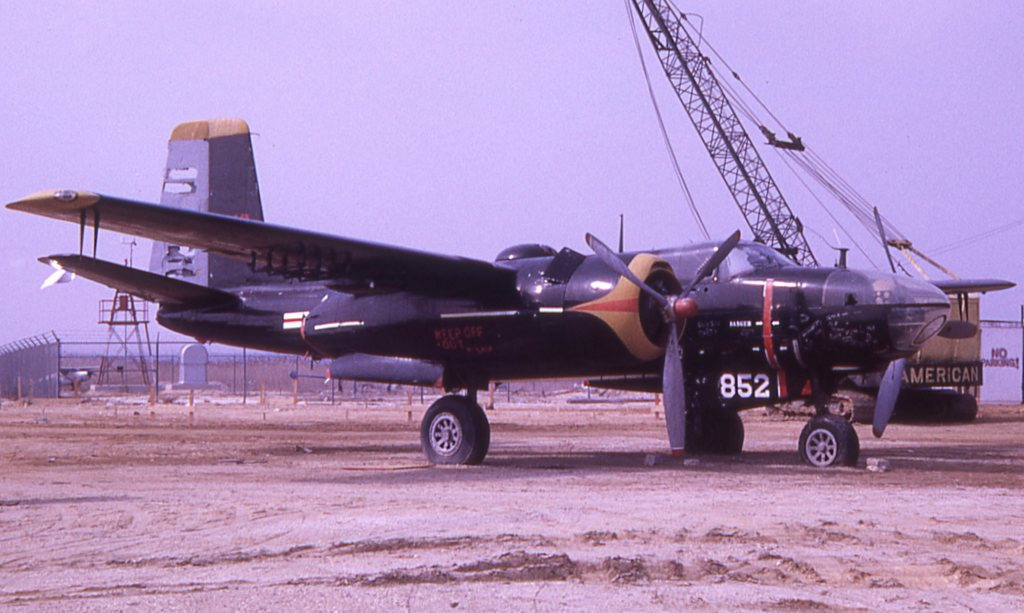History
The Douglas A-26 Invader was a twin-engined American light bomber and ground attack aircraft designed to replace the aging Douglas A-20 Havoc. In that sense, the A-26 was essentially a successor to the Havoc. The prototype XA-26 made its first flight on July 10, 1942. Initial design issues, such as engine cooling problems, were resolved during later development.
The first production version was the A-26B, a dedicated ground-attack aircraft equipped with a solid gun nose. It first saw combat in the Pacific Theater in June 1944, although with negative feedback from the Army Air Corps stationed there, and later in Europe by September of the same year.
In parallel development with the A-26B, the A-26C was developed as a bomber version with a glass nose. Crewed by three, the bombardier, who also served as navigator, was stationed in the nose section and operated the Norden bombsight for high-altitude bombing. The A-26C often acted as a lead-ship in bombing formations, guiding accompanying A-26Bs. Once the A-26C dropped its payload over the target, the following aircraft would release their bombs in unison.
Armament on the A-26C was similar to the A-26B. However, instead of six to eight forward-firing machine guns in the nose, the A-26C had two fixed 0.50 caliber machine guns mounted on the lower starboard side of the nose. Like the B model, it retained two remote-controlled turrets for defense.
Douglas produced 1,091 A-26Cs in total: 1,086 at the Tulsa facility, in Oklahoma, and five at Long Beach, California. Production blocks ranged from A-26C-1-DL to A-26C-55-DT.
From the A-26C-30-DT block onward, Invaders on the production line were fitted with a clamshell-style canopy to improve visibility and bailout safety. Beginning with the A-26C-45-DT, production aircraft were equipped with water-injected R-2800-79 engines and underwing rocket provisions. Later blocks (A-26C-55-DT and beyond) integrated six internal wing-mounted machine guns, replacing earlier models’ externally mounted package guns.
The A-26C-50-DT variant, proposed here for inclusion, was powered by the water-injected Pratt & Whitney R-2800-79 engines, which offered a modest increase in power during War Emergency Power (WEP) compared to earlier models equipped with the R-2800-27. This variant was equipped to carry up to 14 rockets and featured two fixed 0.50 caliber machine guns in the nose. Unlike earlier models that relied on external wing-mounted gun pods, the -50-DT incorporated six internal wing-mounted machine guns while preserving the ability to carry bombs on the underwing racks. Additionally, this variant came from the factory with the new clamshell canopy for enhanced visibility and crew safety.
A total of 155 A-26C-50-DT aircraft were produced and delivered between June and July 1945. However, they arrived too late to see combat in Europe and likely missed combat operations in the Pacific as well, given Japan’s surrender in August 1945.
Later A-26C models, including the -50-DT, would go on to serve in the Korean War. The first Invader bombing sortie occurred in late June 1950. Throughout the conflict, the Invaders were credited with destroying more than 38,000 vehicles, 400 locomotives, 3,700 railcars, and seven enemy aircraft on the ground. Their final bombing mission was flown just 24 minutes before the Korean Armistice Agreement took effect.







